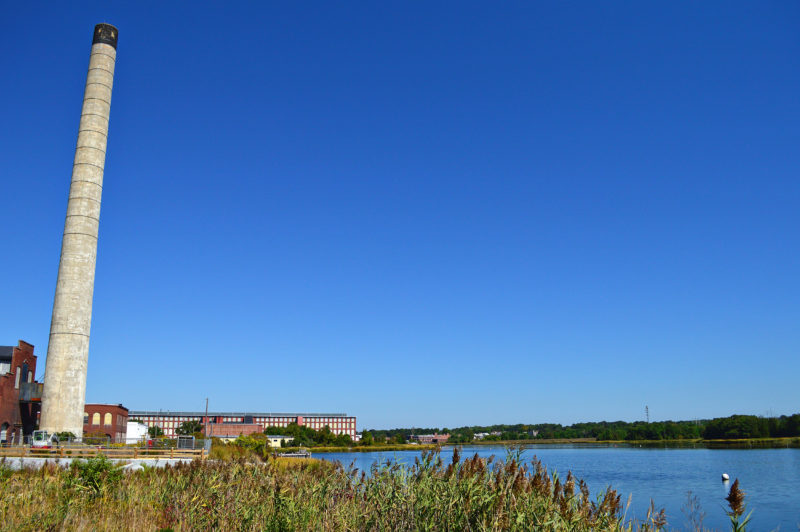Strong advocacy leads to better cleanup choices for New Bedford Harbor
The New Bedford community has won a hard-fought battle in the fight to clean up toxic PCB pollution in New Bedford Harbor.

Factories along the Acushnet River dumped toxic PCBs into the water in the middle of the 20th century. Toxic contaminants still linger at the bottom of the river and New Bedford Harbor, just downstream from here.
At a public meeting last night, representatives from the U.S. Environmental Protection Agency (EPA) announced that the agency is abandoning plans to bury contaminated sediment directly along the harbor’s shoreline in large bulkheaded cells called Confined Disposal Facilities (CDFs). Instead, they will ship it to a safe, secure disposal facility out of state.
New Bedford Harbor has suffered for decades from toxic PCB pollution. In the mid-20th century, factories along the Acushnet River dumped PCBs into the water. This toxic pollution still lingers in the sediment at the bottom of the harbor, particularly in the upper harbor (north of Interstate 195) where the factories were located.
Toxic pollution has robbed local residents of the opportunity to safely use New Bedford Harbor for recreational activities like fishing and shellfishing. The EPA has been working for years to clean up the PCBs, but progress has been slow until recently.
For the past four years, the Coalition has advocated for the best possible cleanup for New Bedford Harbor. In this most recent victory for the harbor, we steered the EPA away from using cleanup methods like CDFs and an upper harbor Confined Aquatic Disposal (CAD) cell, which we have firmly opposed for years now. These cleanup methods would permanently leave behind dangerous levels of cancer-causing PCBs in the most contaminated part of the harbor – a place where thousands of people live, work, and play.
We even went to court to challenge a $366 million cleanup settlement between the EPA and AVX, the largest company responsible for the harbor’s PCB pollution, because it wouldn’t provide enough money to fully clean up the harbor.
“Because of strong community input, EPA is getting rid of the majority of PCBs from New Bedford Harbor,” said Coalition President Mark Rasmussen. “By raising our voices, the community can influence the direction of this cleanup so future generations can inherit a safe, clean harbor.”
This choice by the EPA is a step in the right direction. But the fight for a clean New Bedford Harbor still isn’t over.
The fact remains that the EPA is leaving New Bedford Harbor with one of the worst PCB cleanups in America. In some parts of the harbor, the EPA is planning to leave behind 50 times more toxic pollution than it has in similar waterway cleanups in other parts of the country.
“We’re relieved that the EPA is properly disposing of what they’re scooping up from the bottom of the upper harbor, but they’re still leaving too much toxic pollution behind,” said Rasmussen. “If this cleanup is completed as planned, the entire harbor will still be off-limits to fishing and shellfishing.”
The Coalition will keep up its advocacy to ensure that New Bedford Harbor gets the cleanup it deserves. We will continue to review and provide detailed comments on the EPA’s cleanup plans.